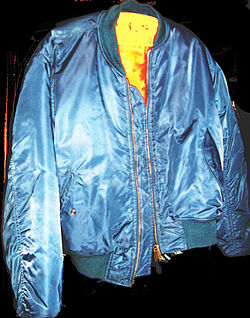
A jacket is a garment for the upper body, usually extending below the hips. [1] A jacket typically has sleeves and fastens in the front or slightly on the side. Jackets without sleeves are vests. A jacket is generally lighter, tighter-fitting, and less insulating than a coat, but both are outerwear. Some jackets are fashionable, while some others serve as protective clothing.






